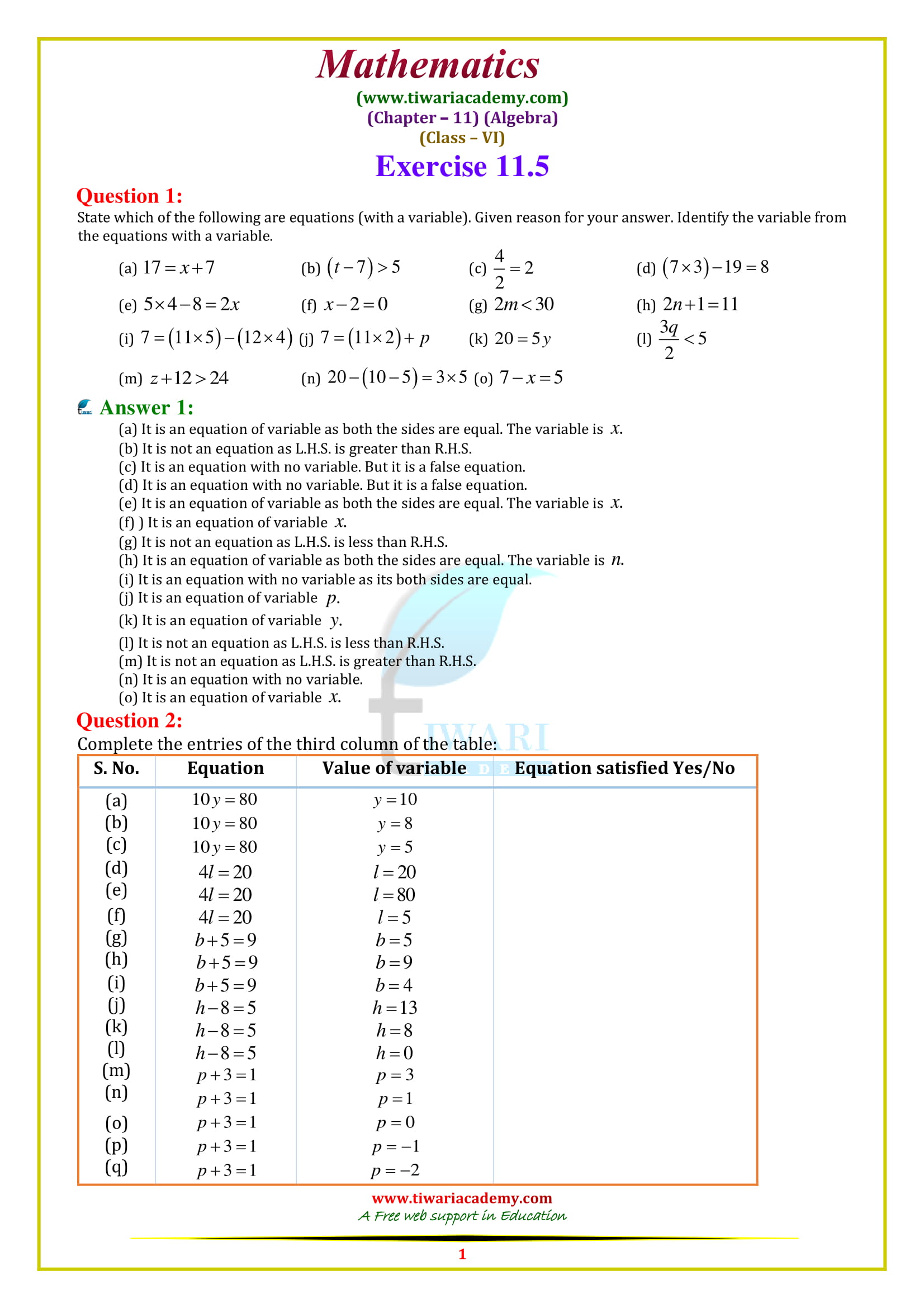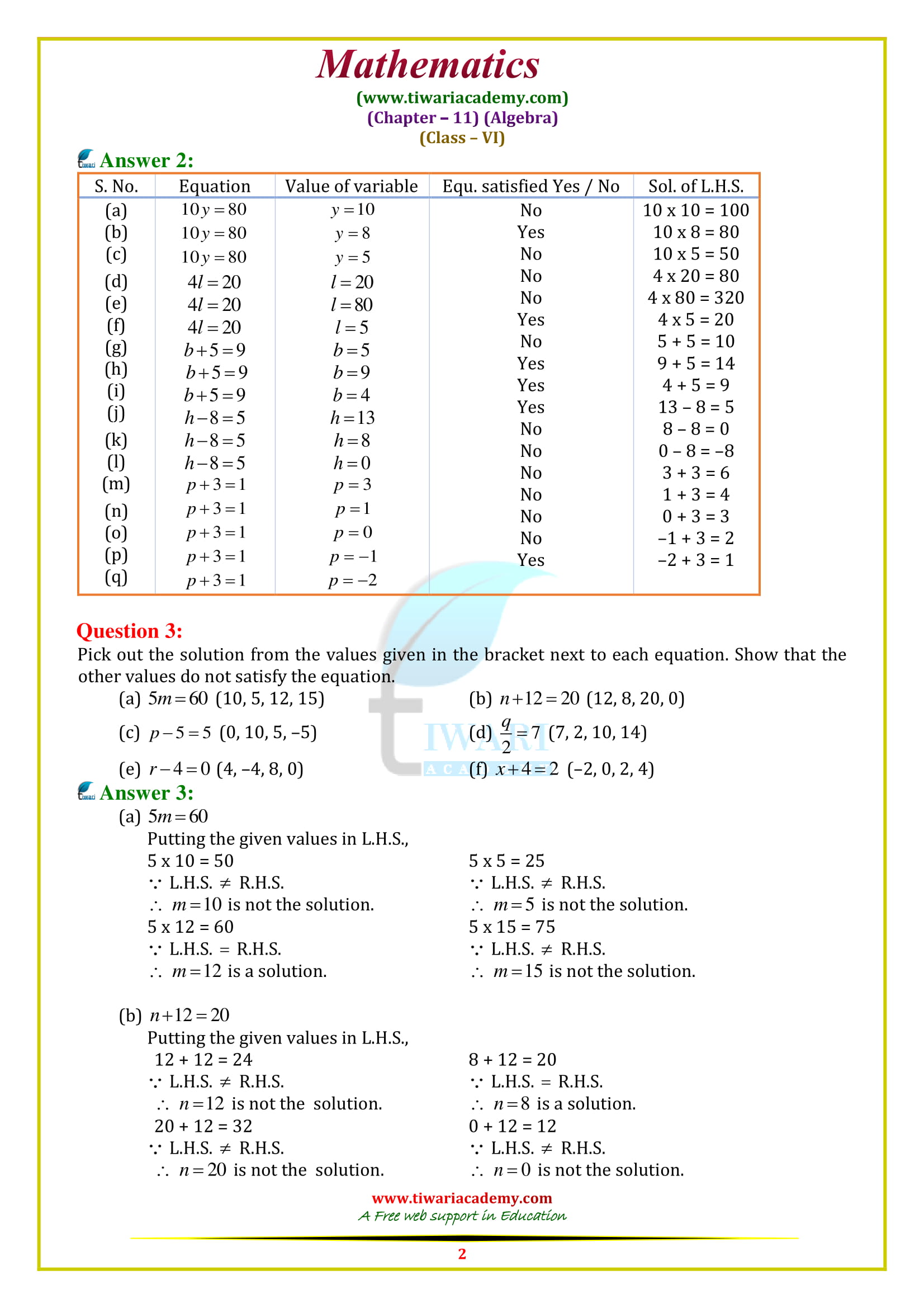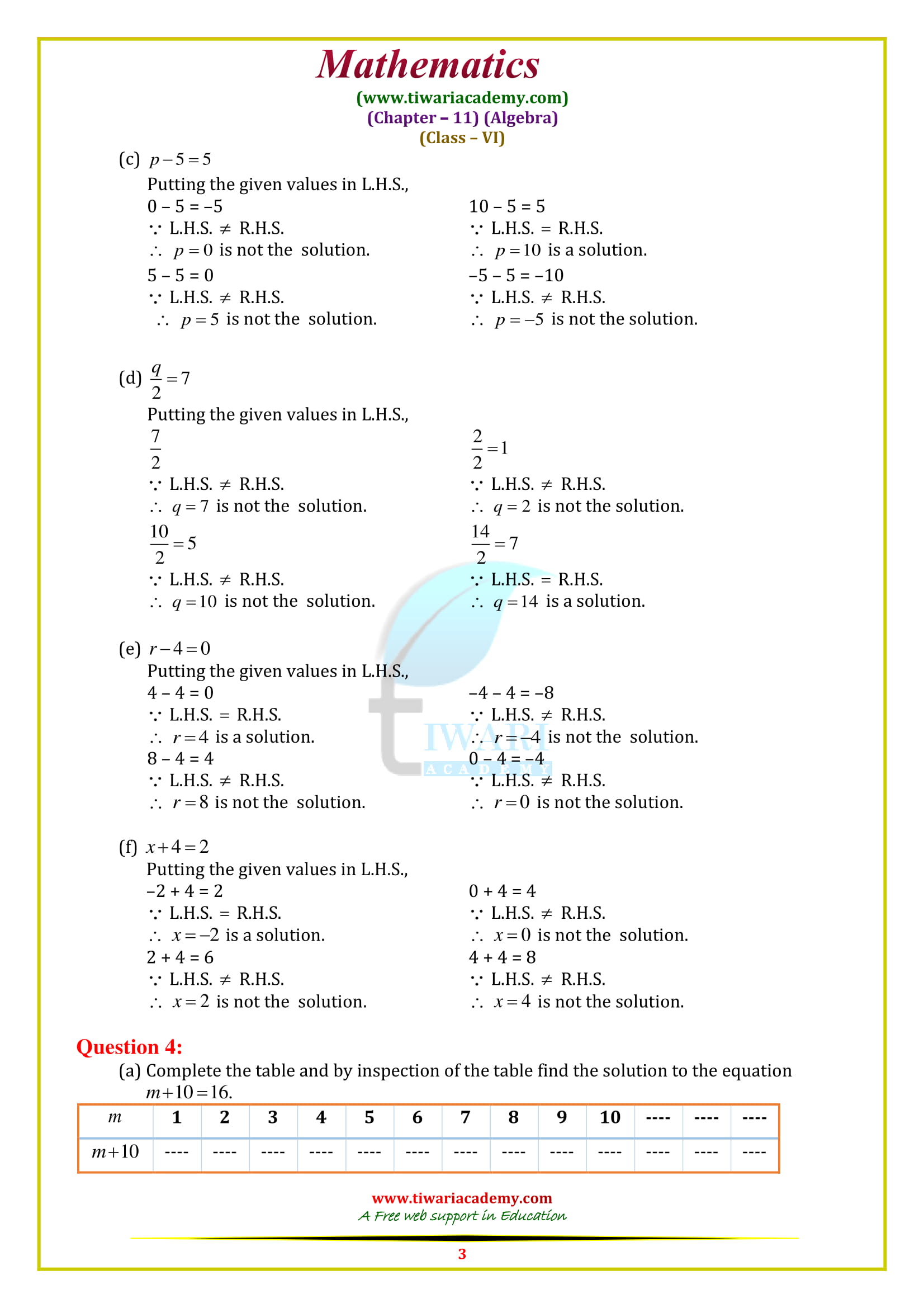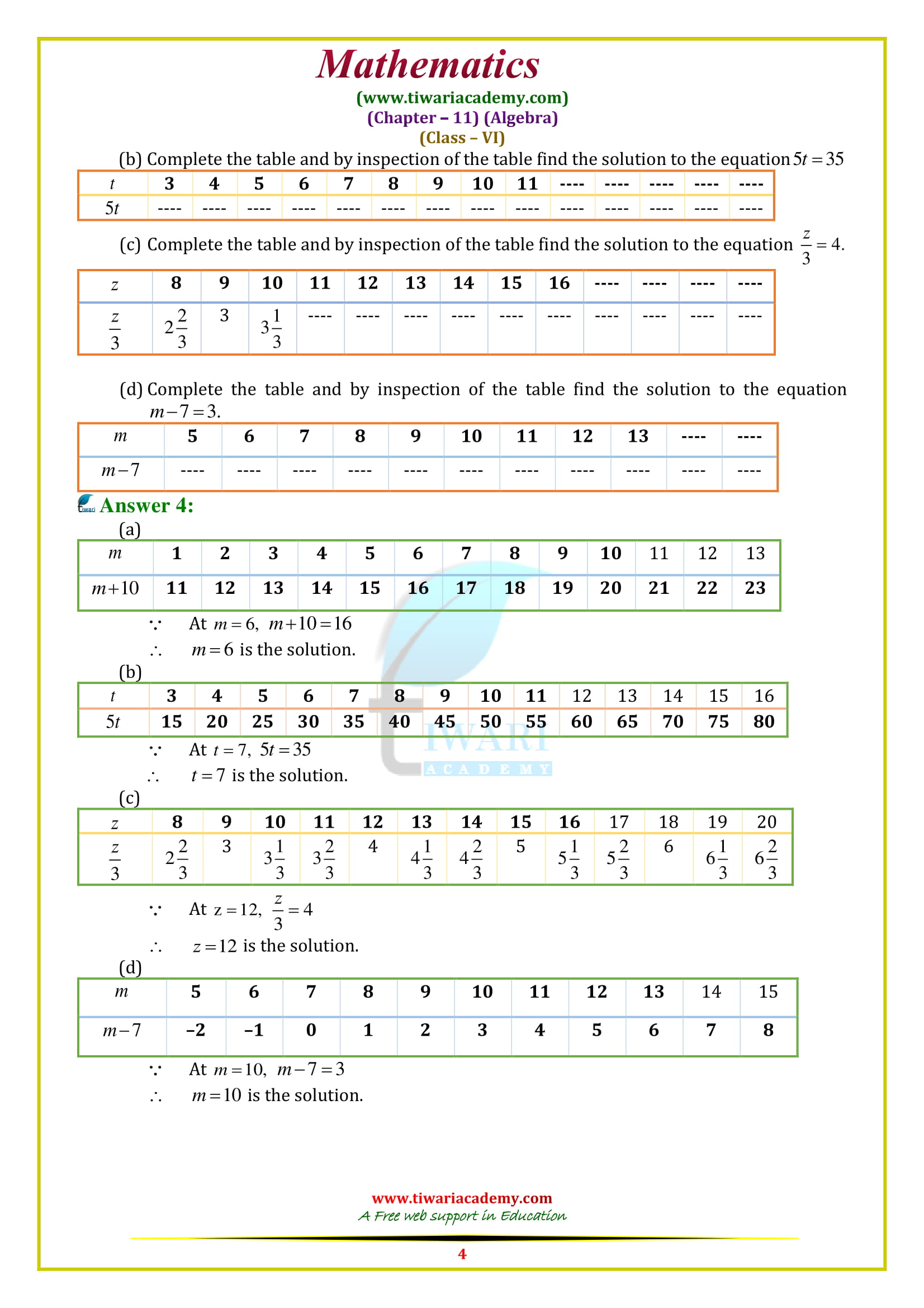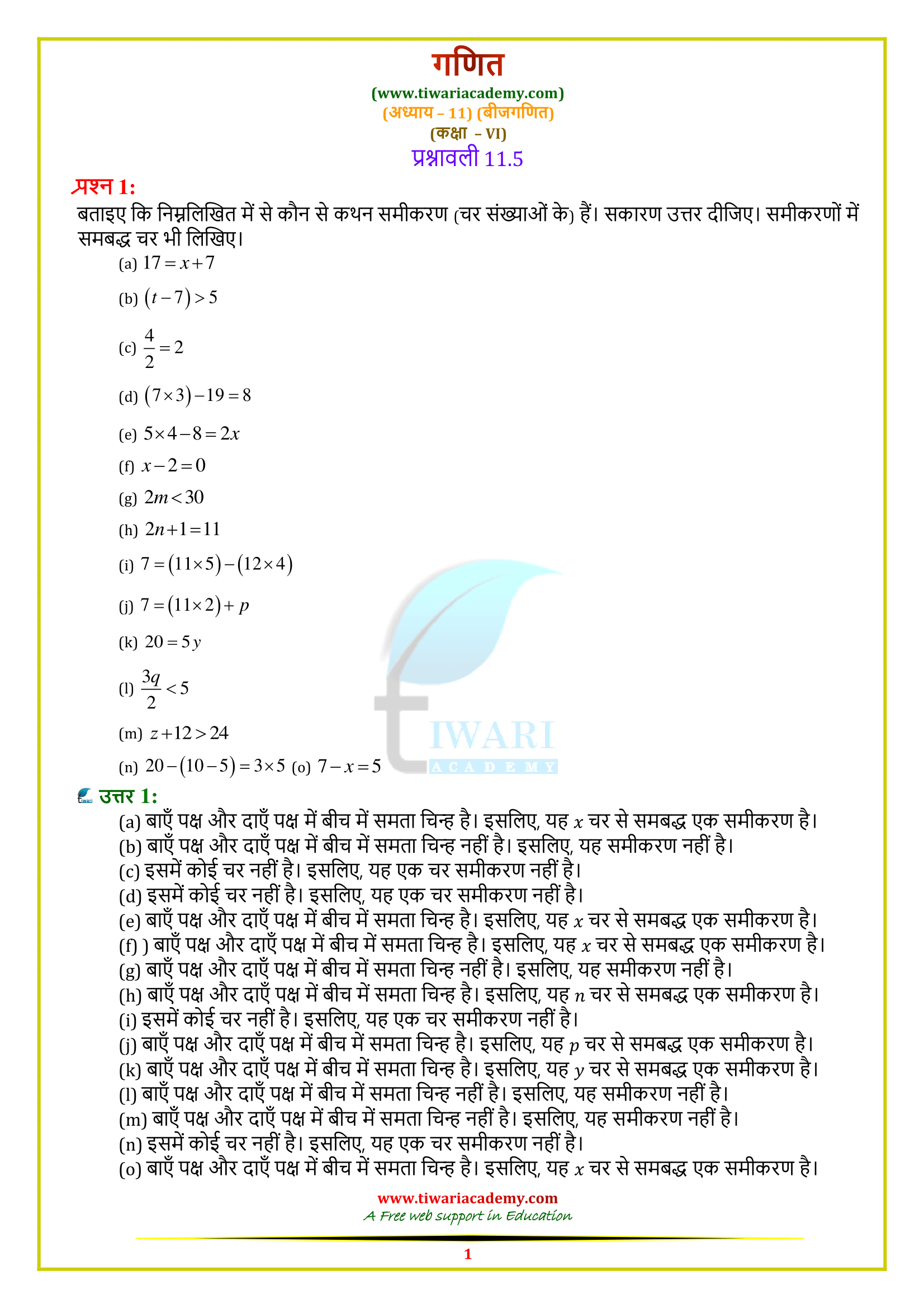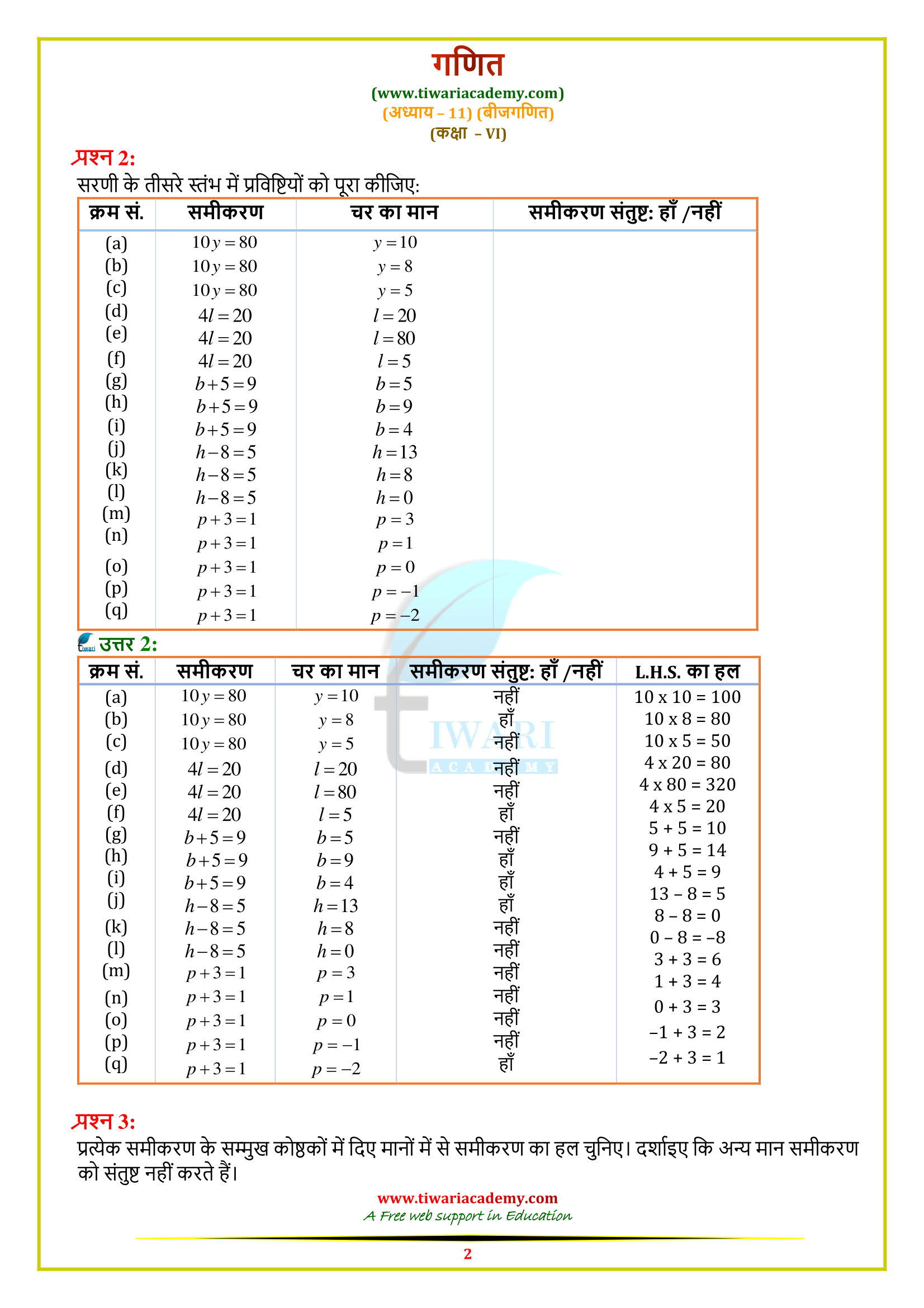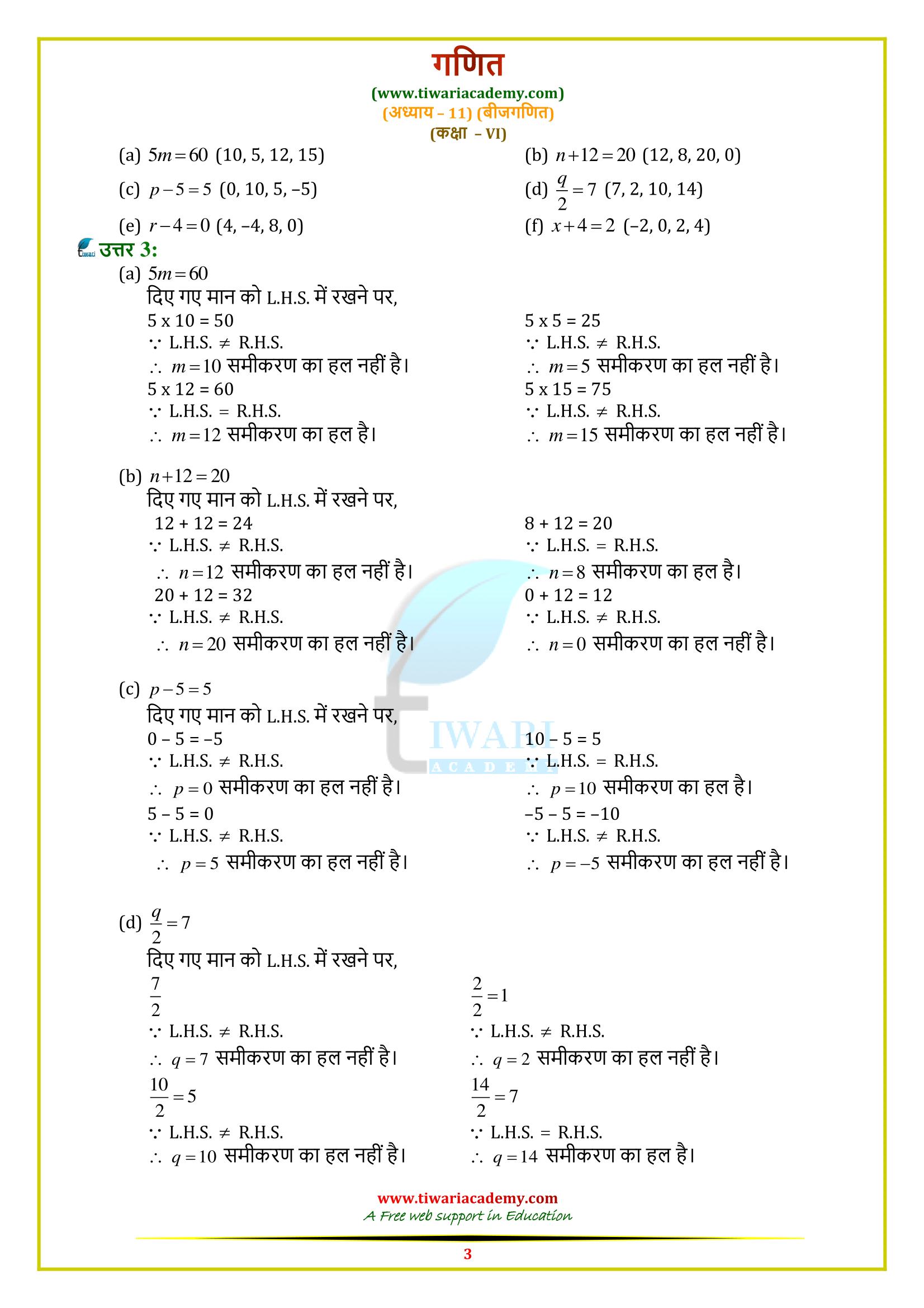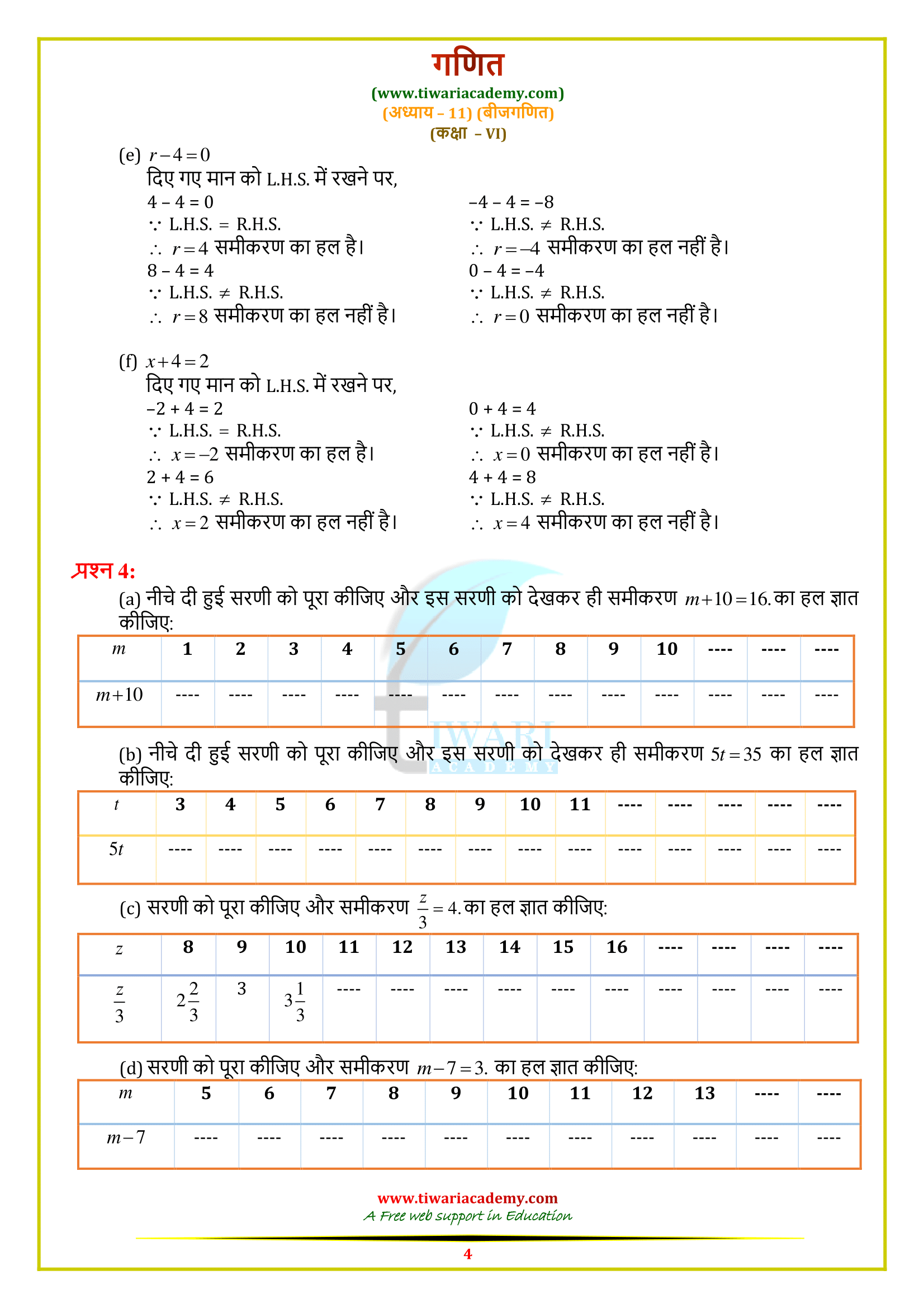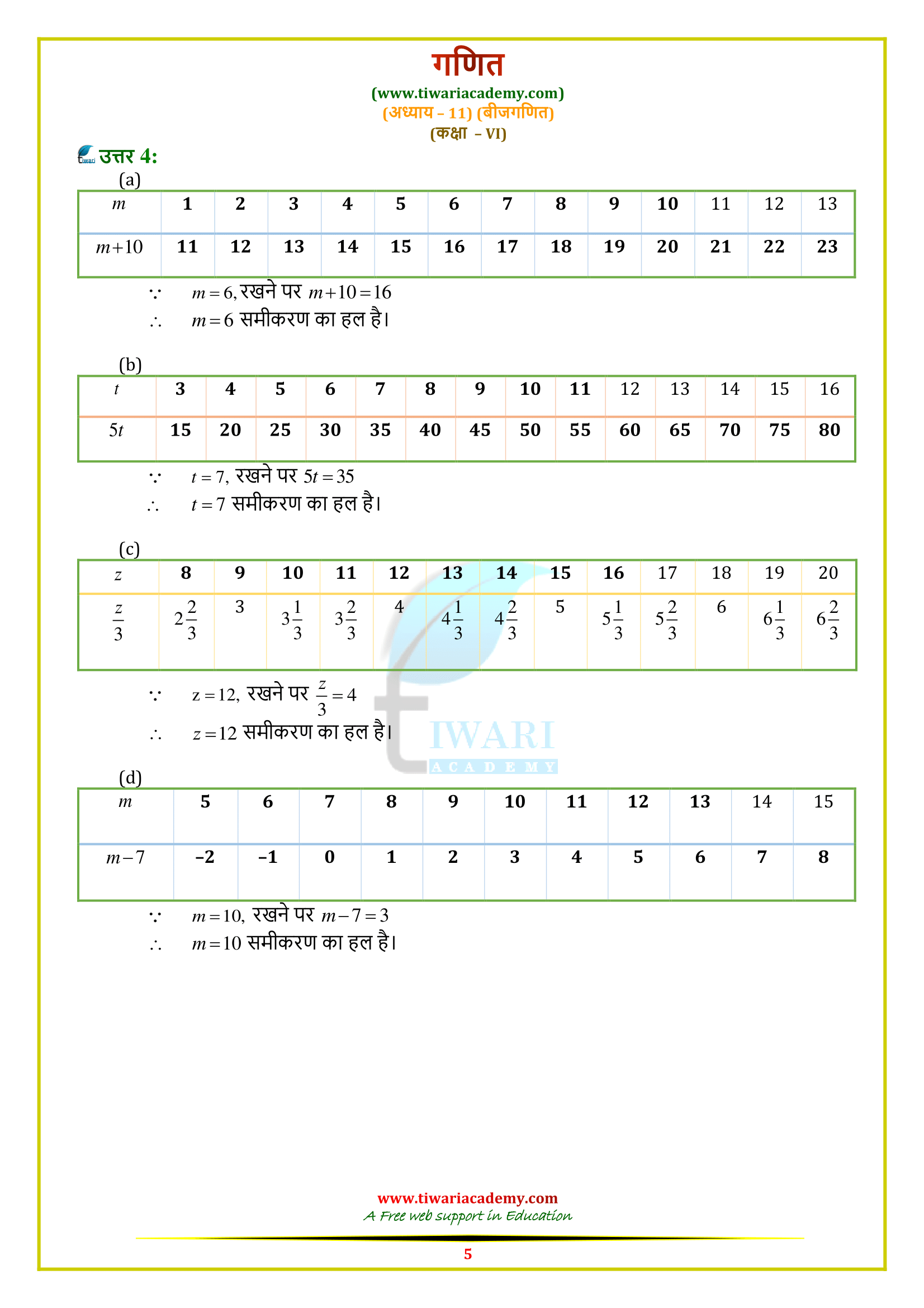NCERT Solutions for Class 6 Maths Chapter 11 Exercise 11.5 Algebra in Hindi and English Medium prepared for all State Boards. Unlock NCERT Class 6 Maths solutions for Ch. 11, Ex. 11.5 in Algebra at Tiwari Academy. Available in Hindi/English, ideal for CBSE & State Board exam prep.
6th Maths Exercise 11.5 Solutions in Hindi and English Medium
Class 6 Maths Chapter 11 Exercise 11.5 Solution
Class VI Mathematics NCERT (https://ncert.nic.in/) textbook Ex. 11.5 of chapter 11 Algebra updated for CBSE new session 2024-25 in Hindi and English Medium. All the contents are free to download or use online without any login or password. Practice the questions based on algebra and its basics in class 6 math exercise 11.5 including application based questions. If you have difficulty to understand solution through PDF NCERT Books solution, use video solution to solve your doubts.
| Class: 6 | Mathematics |
| Chapter: 11 | Exercise: 11.5 |
| Chapter Name: | Algebra |
| Content: | NCERT Book’s Solutions |
| Medium: | Dual Language – Hindi and English |
Expressions with Variables
To form expressions, we use all the four number operations of addition, subtraction, multiplication and division. For example, to form (2 × 10) + 3, we have multiplied 2 by 10 and then added 3 to the product. Examples of some of the other arithmetic expressions are:
(i) 3 + (4 × 5)
(ii) (– 3 × 40) + 5
Class 6 Maths Chapter 11 Exercise 11.5 Solution in Videos
Expressions can be formed from variables too. In fact, we already have seen expressions with variables, for example: 2n, 5m, x + 10, x – 3 etc.
These expressions with variables are obtained by operations of addition, subtraction, multiplication and division on variables. For example, the expression 2n is formed by multiplying the variable n by 2; the expression (x + 10) is formed by adding 10 to the variable x and so on.
Note: A number expression like (4 × 3) + 5 can be immediately evaluated as (4 × 3) + 5 = 12 + 5 = 17.
But an expression like (4x + 5), which contains the variable x, cannot be evaluated. Only if x is given some value, an expression like (4x + 5) can be evaluated. For example, when x = 3, 4x + 5 = (4 × 3) + 5 = 17 as found above.
Class 6 Maths Exercise 11.5 Extra Questions with Answer
Make up as many expressions with numbers as you can from three numbers 5, 7 and 8. Every number should be used not more than once. Use only addition, subtraction and multiplication.
We can make many expressions here three possible expressions are:
(i) 5 + (8 – 7)
(ii) 5 – (8 – 7)
(iii) (5 × 8) + 7
What is an example of one solution?
On solving we have 7x = 35 or x = 5. The above linear equation is only true if x = 5 and hence the given linear equation has only one solution i.e. x = 5.
Using Expressions Practically
We have already come across practical situations in which expressions are useful.
(i) Raju’s father’s age is 2 years more than 3 times Raju’s age.
Let Raju’s age is x years, then his father age will be (3x + 2) years
(ii) The speed of a bus is 10 km/hour more than the speed of a truck going on the same road.
Let the speed of the truck be y km/hour.
The speed of the bus is (y + 10) km/hour.
Equation
In algebra, an equation can be defined as a mathematical statement consisting of an equal symbol between two algebraic expressions that have the same value.
Here, for example, 5x + 9 is the expression on the left-hand side, which is equal to the expression 24 on the right-hand side.
Class 6 Maths Exercise 11.5 Important Questions
How many solutions do equations have?
A system of linear equations usually has a single solution, but sometimes it can have no solution (parallel lines) or infinite solutions (same line).
Which equation has no solution?
The solution x = 0 means that the value 0 satisfies the equation, so there is a solution. “No solution” means that there is no value, not even 0, which would satisfy the equation.
What are the 4 steps to solving an equation?
We have 4 ways of solving one-step equations: Adding, Subtracting, multiplication and division.
Solution of an Equation
The value of the variable in an equation which satisfies the equation is called a solution to the equation.
For example, let us take the equation x – 3 = 11
This equation is satisfied by x = 14, because for x = 14, LHS of the equation = 14 – 3 = 11 = RHS
Thus, x = 14 is a solution to the equation x – 3 = 11
What are the main topics that students will study in exercise 11.5 of 6th Mathematics?
The main topics that students will study in exercise 11.5 of grade 6th Maths are:
1. Meaning of an equation
2. Meaning of solution of an equation (The value of the variable in an equation that satisfies the equation is called a solution to the equation).
Which questions of exercise 11.5 of class 6th Maths have a chance to come in the exams?
Exercise 11.5 of class 6th Maths has 5 questions. Question 1 has 15 parts, question 2 has 17 parts, question 3 has 6 parts, question 4 has 4 parts, and question 5 has 4 parts. Complete questions 3 and 5 of exercise 11.5 are important and have a chance to come in the exams.
How much time should the teacher give to the students to finish exercise 11.5 of 6th standard Maths?
Exercise 11.5 of class 6th Maths has five lengthy questions. The teacher should give at least 3-4 days (1 hour per day) to the students to finish exercise 11.5 of 6th standard Maths.
Which questions of exercise 11.5 of 6th standard Maths are simple and which are difficult?
Exercise 11.5 of class 6th Maths has five questions. Questions 1, 2, 3, and 4 of exercise 11.5 of class 6th Maths are easy, and question 5 of exercise 11.5 of class 6th Maths is complex.
